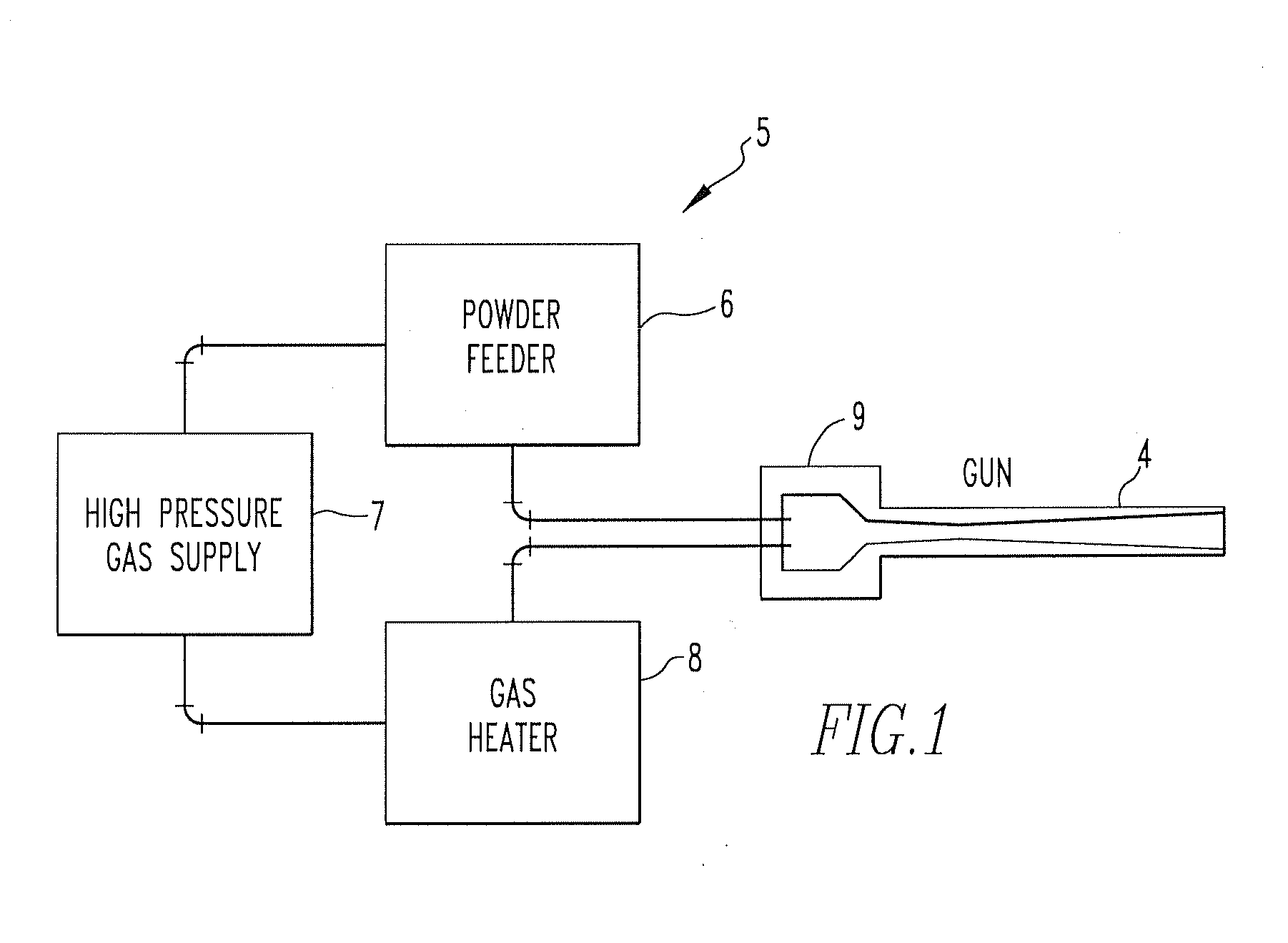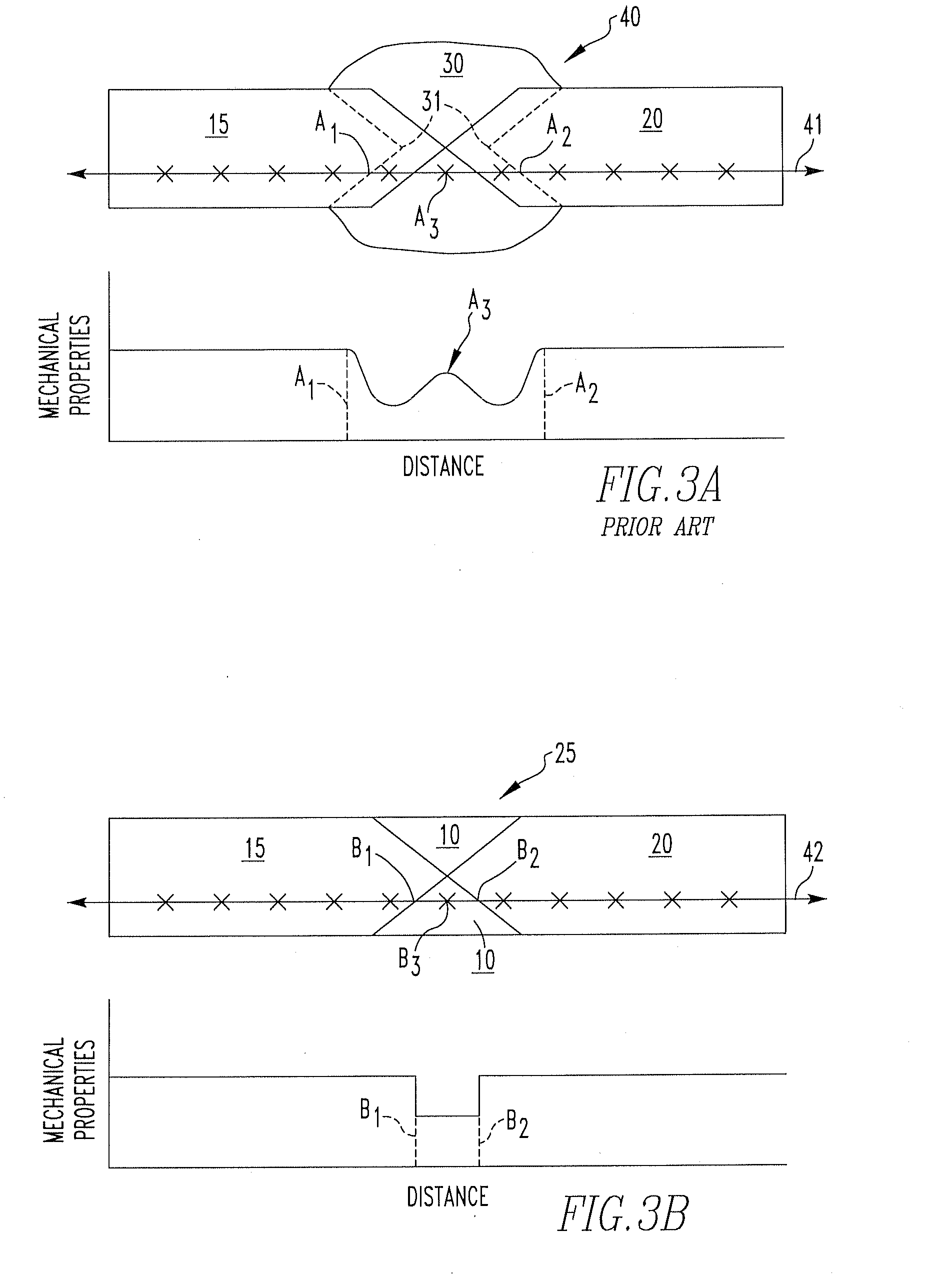High velocity metallic powder spray fastening
a high-speed, metallic powder technology, applied in the direction of manufacturing tools, solvents, cooking vessels, etc., can solve the problems of glass and ceramics, inability to produce bi-material junctions, and inability to weld metals with different classifications of materials, etc., to achieve bi-material junctions, and achieve welding in applications in which adhesives are employed. limited
- Summary
- Abstract
- Description
- Claims
- Application Information
AI Technical Summary
Benefits of technology
Problems solved by technology
Method used
Image
Examples
Embodiment Construction
[0032] In one embodiment, the present invention provides a low temperature joining method that is compatible with multiple material types and results in a molecular fusion between joined structures without reducing the mechanical properties of the joined structure's base materials.
[0033] Referring to FIG. 1, in one embodiment, the present invention employs a high velocity powder spray apparatus 5 to deposit metallic bonding material to interlock two of more structures. One example of a high velocity powder spray apparatus 5 may comprise a powder feeder 6, high pressure gas supply 7, a gas heater 8, and a gun 9 to direct the metallic bonding material to the surfaces of the structures to be joined at a sufficient velocity to form a molecular fusion between the surfaces being joined and the metallic bonding material. In one embodiment, the molecular fusion is provided without bringing the structures to be joined to their melting temperatures, hence providing a bond without resulting i...
PUM
| Property | Measurement | Unit |
|---|---|---|
| diameter | aaaaa | aaaaa |
| diameter | aaaaa | aaaaa |
| velocity | aaaaa | aaaaa |
Abstract
Description
Claims
Application Information
 Login to View More
Login to View More - R&D
- Intellectual Property
- Life Sciences
- Materials
- Tech Scout
- Unparalleled Data Quality
- Higher Quality Content
- 60% Fewer Hallucinations
Browse by: Latest US Patents, China's latest patents, Technical Efficacy Thesaurus, Application Domain, Technology Topic, Popular Technical Reports.
© 2025 PatSnap. All rights reserved.Legal|Privacy policy|Modern Slavery Act Transparency Statement|Sitemap|About US| Contact US: help@patsnap.com



